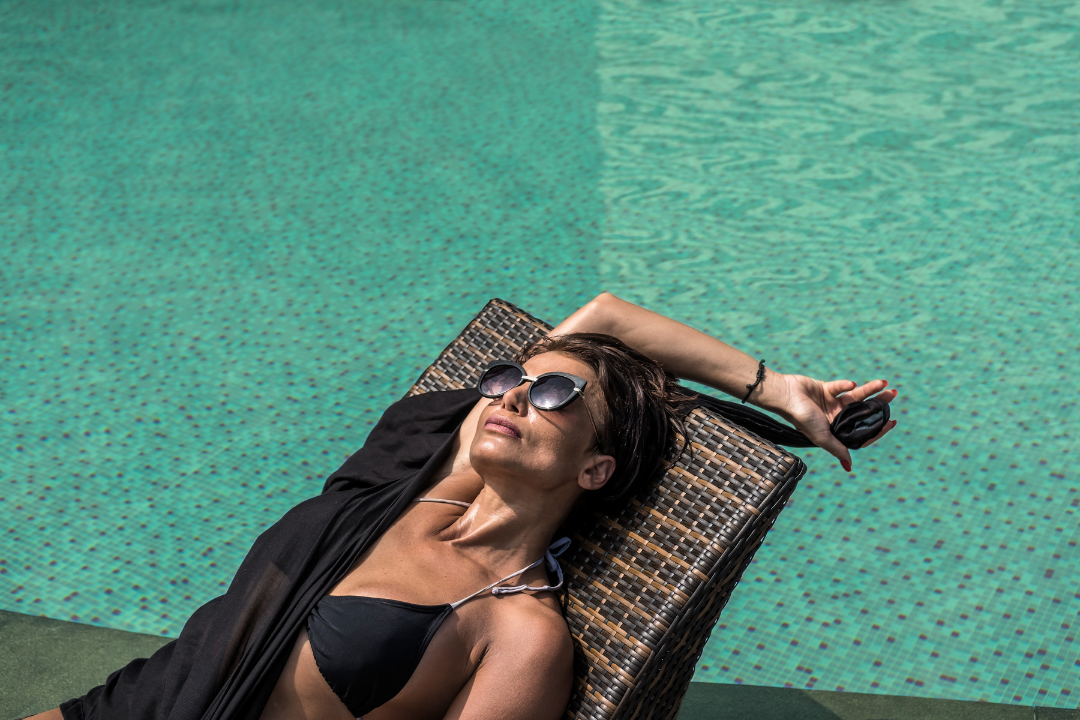Dive into how pool exposure affects your hair, and learn what makes your scalp stay afloat this summer.

A refreshing dip in the pool is one of summer’s joys—but for your scalp and hair, chlorine and pool disinfectants can quietly cause chaos. These chemicals are essential for water hygiene but may strip natural oils, disrupt the scalp’s pH, weaken the barrier function, and damage the hair shaft.
What Chlorine Does to the Scalp
1. Lipid Barrier Breakdown
Chlorine acts as an oxidising agent, breaking down sebum—your scalp’s natural oil. This compromises hydration and leaves the scalp exposed to irritants and water loss.

3. Increased TEWL (Transepidermal Water Loss)
With disrupted lipids and raised pH, water evaporates faster from the scalp, leading to tightness, flaking, and rebound oiliness.
4. Microbiome Disturbance
Chlorine doesn’t discriminate. It affects beneficial scalp microbes too—especially with repeated exposure—potentially triggering sensitivity, itching, or dandruff.
How Pool Chemicals Affect Your Hair

Cuticle Damage
Chlorine opens up the cuticle, the protective outer layer of your hair, increasing porosity. The vulnerable inner cortex is exposed to friction and oxidation, leading to frizz, split ends, dullness, and breakage.
Protein Degradation
Electron microscopy studies show that chlorine degrades keratin, especially the cysteine-rich regions that maintain strength and elasticity. Result: weakened, fragile strands.
Oxidative Colour Fading
Chlorine accelerates the degradation of melanin (natural pigment) and causes oxidative stress—bad news for coloured hair. In blondes, chlorine can also react with copper ions in water, resulting in a greenish tinge.
Signs of Chlorine Reaction
- Flaky or tight scalp a few hours post-swim
- Itching or tingling along the hairline
- Rough-feeling scalp despite washing
- Dull, rough or limp hair the next day
Scalp & Hair Protection for Swimmers

Before Swimming:
- Wet your hair with clean water—this saturates the cuticle, reducing chlorine absorption.
- Mist scalp with Dakmatter 300 Aroma Tonic to support pH and microbiota balance.
- Apply a thin layer of Dakmatter 201 Conditioning Oil Serum to dry scalp and hair to form a breathable barrier.
- Wear a swim cap to further limit exposure.
After Swimming:
- Rinse thoroughly with clean water immediately.
- Wash with Dakmatter 010 Slip Wash Pro, which lifts chlorine gently while preserving scalp lipids.
- Reapply Dakmatter 300 Aroma Tonic to rebalance scalp pH and reduce water loss.
Avoid:
- Harsh surfactants (like SLS) or clarifying shampoos
- Vigorous scrubbing or exfoliation post-swim
- Ignoring subtle signs of irritation, early detection prevents lasting damage
The Takeaway

You don’t have to give up pool time to keep your scalp and hair healthy. With the right prep and aftercare focused on barrier protection, hydration, and pH support, you can enjoy your swim without compromising your crown. PS. The Classic that never goes out of effect and fashion: Always protect scalp and hair with a hat or scarf while not being in the water. It may be life-changing... Knowledge is power!




